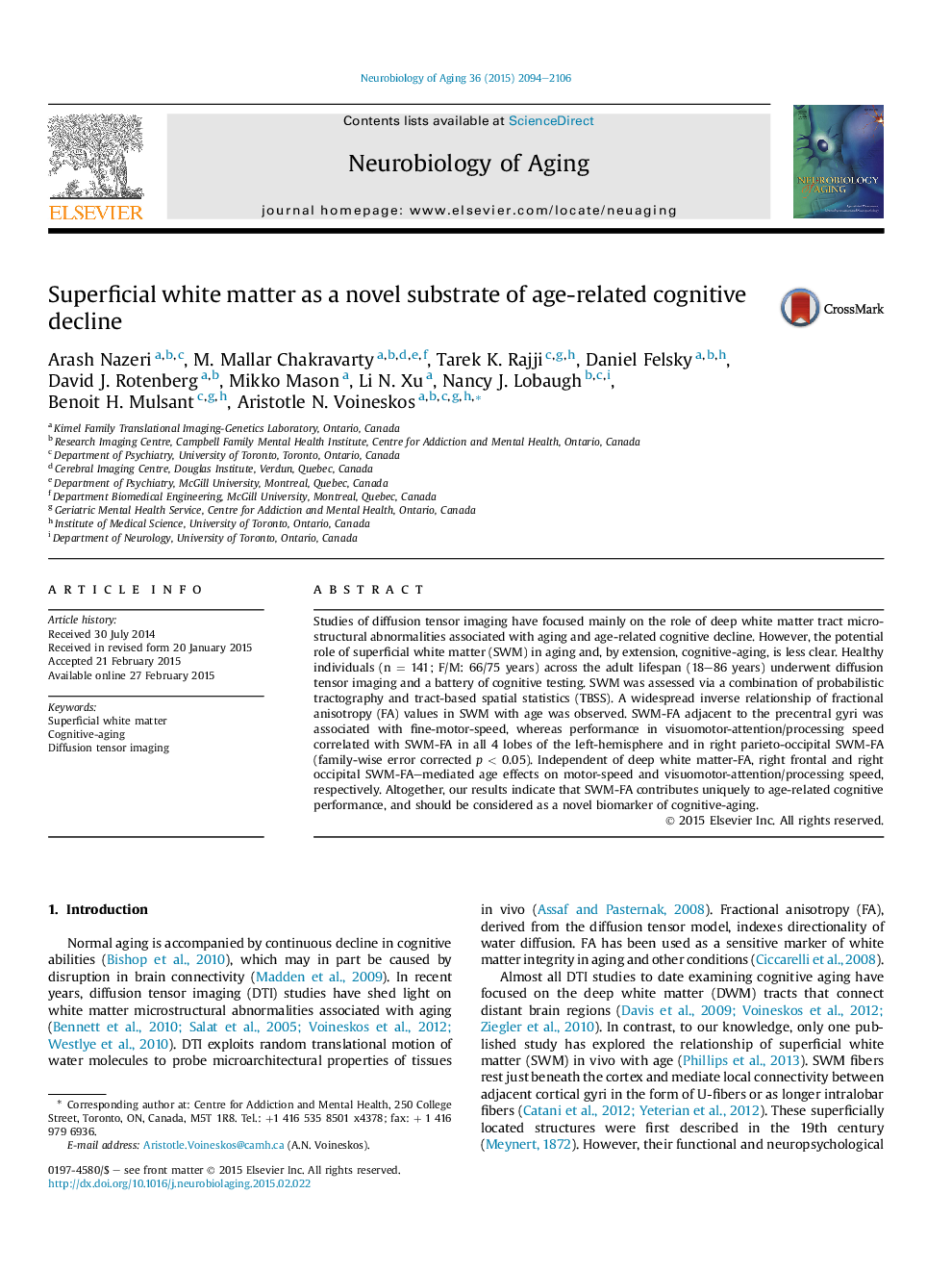| Article ID | Journal | Published Year | Pages | File Type |
|---|---|---|---|---|
| 6804240 | Neurobiology of Aging | 2015 | 13 Pages |
Abstract
Studies of diffusion tensor imaging have focused mainly on the role of deep white matter tract microstructural abnormalities associated with aging and age-related cognitive decline. However, the potential role of superficial white matter (SWM) in aging and, by extension, cognitive-aging, is less clear. Healthy individuals (n = 141; F/M: 66/75 years) across the adult lifespan (18-86 years) underwent diffusion tensor imaging and a battery of cognitive testing. SWM was assessed via a combination of probabilistic tractography and tract-based spatial statistics (TBSS). A widespread inverse relationship of fractional anisotropy (FA) values in SWM with age was observed. SWM-FA adjacent to the precentral gyri was associated with fine-motor-speed, whereas performance in visuomotor-attention/processing speed correlated with SWM-FA in all 4 lobes of the left-hemisphere and in right parieto-occipital SWM-FA (family-wise error corrected p < 0.05). Independent of deep white matter-FA, right frontal and right occipital SWM-FA-mediated age effects on motor-speed and visuomotor-attention/processing speed, respectively. Altogether, our results indicate that SWM-FA contributes uniquely to age-related cognitive performance, and should be considered as a novel biomarker of cognitive-aging.
Keywords
Related Topics
Life Sciences
Biochemistry, Genetics and Molecular Biology
Ageing
Authors
Arash Nazeri, M. Mallar Chakravarty, Tarek K. Rajji, Daniel Felsky, David J. Rotenberg, Mikko Mason, Li N. Xu, Nancy J. Lobaugh, Benoit H. Mulsant, Aristotle N. Voineskos,
